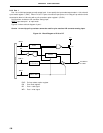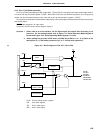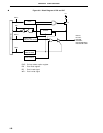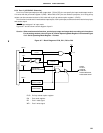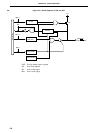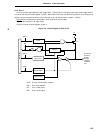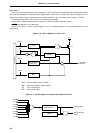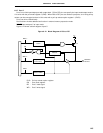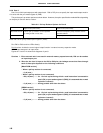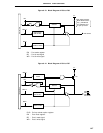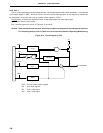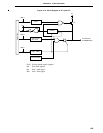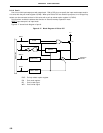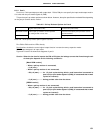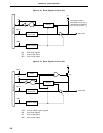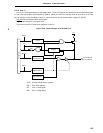
146
CHAPTER 6 PORT FUNCTIONS
6.2.8 Port 6
Port 6 is an 8-bit input/output port with output latch. P60 to P67 pins can specify the input mode/output mode in
1-bit units with the port mode register 6 (PM6).
This port has pull-up resistor options as shown below. However, the option specification method differs depending
on the port pin and the device version.
Table 6-4. Pull-up Resistor Options for Port 6
Higher 4 bits (P64 to P67) Lower 4 bits (P60 to P63)
Mask ROM version Internal pull-up resistors can be specified Internal mask-option pull-up resistors can be
by setting PUO6 in 4-bit units. specified bitwise.
PROM version No pull-up resistor options
PUO6 : Bit 6 of the pull-up resistor option register L (PUOL)
Pins P60 to P63 can drive LEDs directly.
Dual-functions include the control signal output function in external memory expansion mode.
RESET input sets port 6 to input mode.
Figures 6-13 and 6-14 show block diagrams of port 6.
Cautions 1. When external wait is not used in external memory expansion mode, P66 can be used as
an input/output port.
2. When the low level is input to the P60 to P63 pins, the leakage current that flows through
each of these pins depends on the following conditions:
[Mask ROM version]
• When a pull-up resistor is connected,
–3
µ
A (max.)
• When a pull-up resistor is not connected,
–200
µ
A (max.) ........ for 1.5 clock cycles during which a read instruction is executed to
port 6 (P6) or port mode register 6 (PM6) (It is assumed that no wait
cycles are inserted.)
–3
µ
A (max.) ............ during periods other than the above
[PROM version]
• When a pull-up resistor is not connected,
–200
µ
A (max.) ........ for 1.5 clock cycles during which a read instruction is executed to
port 6 (P6) or port mode register 6 (PM6) (It is assumed that no wait
cycles are inserted.)
–3
µ
A (max.) ............ during periods other than the above



